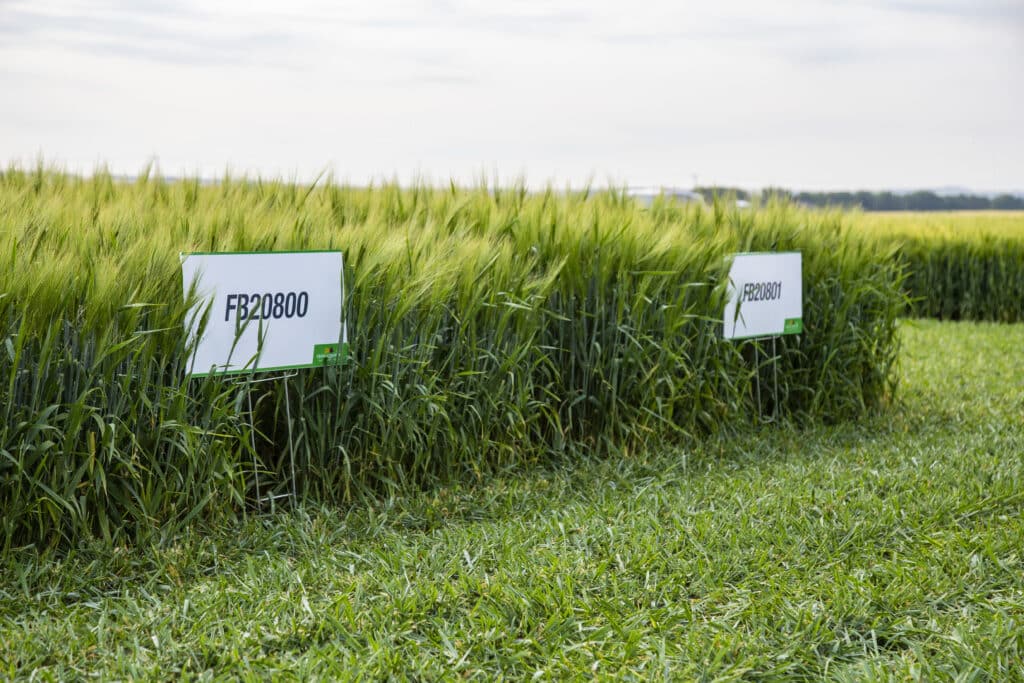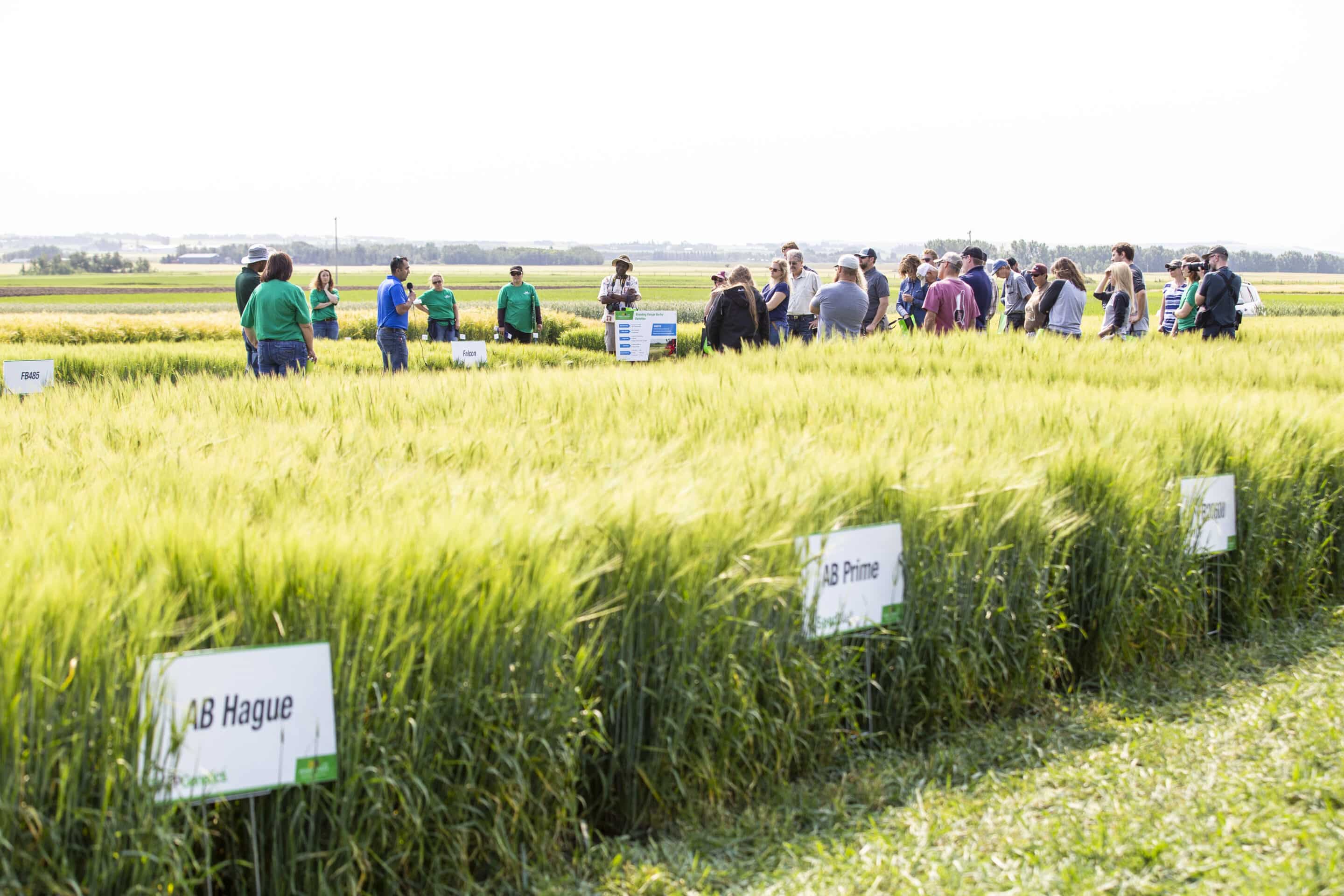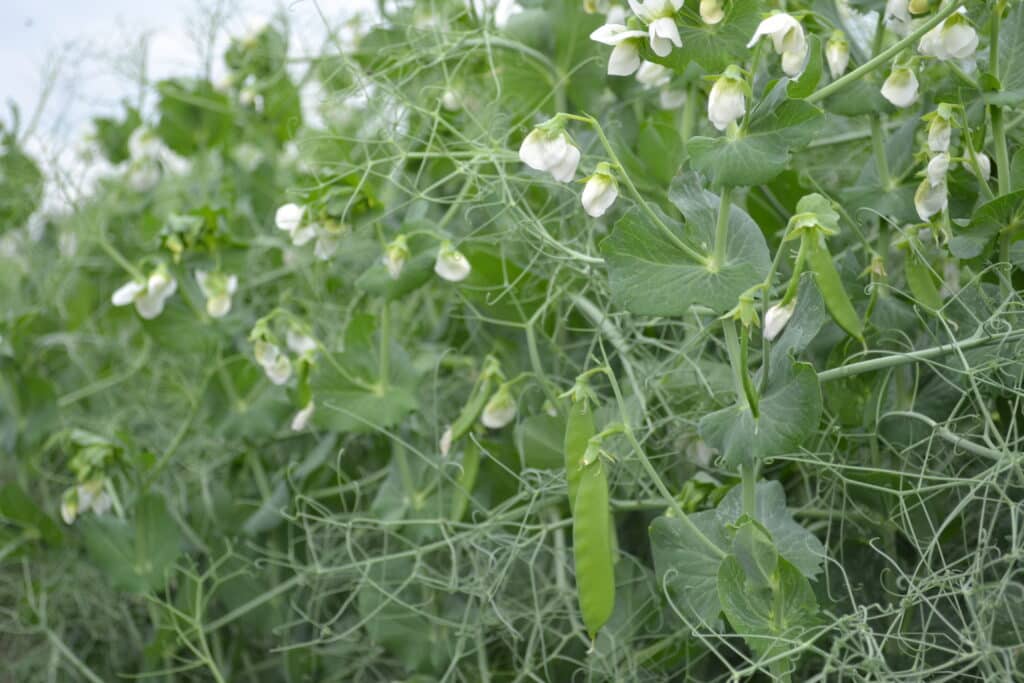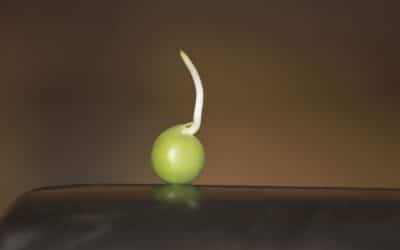How do plant breeders access the funds needed to bring new crop varieties to your fields?
There’s a lot of effort that goes into making a new crop variety, from the research scientists who toil away for years perfecting the traits to the teams who do field trials to the seed growers who multiply the seed and companies that market the new varieties to farmers. All of these components are important but can’t happen if there isn’t money available.
In Canada, plant breeding funding comes from a mishmash of sources. Public breeders at government research stations and academic institutions receive funds from crop checkoff dollars and government funding. Private companies reinvest profits from sales and investor dollars into new varieties. While the formula for funding may seem simple, there’s a lot more that goes into dollar allocation than meets the eye.
“We are heavily investing in breeding programs because we think that breeding is the future and the solution for so many problems. Through breeding we can modify the varieties; we can make them disease resistant; we can improve the agronomic performance,” Nasima Junejo, research manager for Alberta Wheat and Barley commissions, says in a phone interview.
The 2018 Snapshot of Private Innovation Investment in Canada’s Seed Sector from the Canadian Seed Trade Association, projected total research investment in plant breeding, research, and varietal development to grow to $179 million by 2022, a 56 per cent increase since 2012. In “Decision factors influencing new variety adoption in western Canada by the seed industry,” by Rim Lassoued and Stuart J. Smyth, they detail this investment growth is predominantly in canola at 52 per cent, soybeans at 13 per cent, wheat at 12 per cent, corn at 11 per cent, pulses at eight per cent and barley at two per cent.
“Using modern breeding technologies, the private sector invests in most new varieties of canola, corn, and soybean as hybrid crops and (or) patent protected traits, which affords them effective intellectual property rights. The public sector heavily invests in cereal and pulse crops protected by (Plant Breeders’ Rights) as they are self-replicating and exhibit high use of farmer saved seed,” Lassoued and Smyth wrote.
Over the years, breeding priorities have shifted in Canada with private companies taking over breeding certain crops and, in some cases, commercializing the work of the public sector. At Agriculture and Agri-Food Canada (AAFC), the publicly funded breeding program focuses on breeding crops that don’t have large private investment dollars. AAFC has core funding agreements with various producer groups for breeding and works with other public researchers such as those at universities.
Historically, AAFC has played a major role in crop development for Western Canadian farmers. The government breeding program played a pivotal role in the development of canola from rapeseed. During the Cold War there was the idea that Canada needed to be able to grow and make its own vegetable oil. Scientists at AAFC Saskatoon took the lead on looking into possible options and, through collaboration with university researchers, were able to develop canola — now a staple Western Canadian crop.
“AAFC has taken the lead where the science would have been very risky for private companies. Knowing that there were no crushing plants, there was no value chain existing in Canada at the time. So that’s where the public sector has an important role to play, to work on some ideas that are not market ready,” François Eudes, the director of research, development and technology in the science and technology branch at AAFC, says in a phone interview.

Research plots at the Olds College Field Crop Development Centre in Lacombe, Alta. Photo: Alberta Wheat and Barley Commissions
Some of these “riskier” breeding endeavours are where funding from the federal government comes into play. As farmers look for options to diversify their crop rotations economically, AAFC has continued its work on breeding pulse crops while also maintaining its breeding agreements with the cereals industry through groups such as the Canadian Wheat Research Coalition (CWRC). The CWRC is a coalition with the Alberta Wheat Commission, Saskatchewan Wheat Development Commission and Manitoba Crop Alliance.
For the crop commissions, the levies collected from producers’ crop sales are used in various ways. The levies fund operations for the commissions, including organizational expenses along with funding agronomic and varietal development research. The Alberta Wheat and Barley commissions collect $1.09 per metric ton for wheat and $1.2209 per metric ton for barley from farmers in Alberta, approximately 50 to 60 cents per metric ton, which is then allocated towards plant breeding. At Alberta Pulse Growers (APG), approximately 15 to 20 per cent of the levies collected go toward varietal development.
The crop commissions have various funding agreements in place with different breeding programs. APG has agreements with public breeders at research stations, including AAFC Lethbridge for bean breeding and AAFC Lacombe and the Crop Development Centre at the University of Saskatchewan for pea breeding. The pulse commission also partners with breeding programs at private companies, such as LimaGrain, DL Seeds, and Equinom for pea and fababeans — these agreements are coordinated and overseen through Robyne Davidson at Lakeland College.

Shane Strydhorst, chair of Alberta Pulse Growers, on a research plot tour. Photo: Alberta Pulse Growers
“We typically have agreements that run in five-year cycles. This allows us to communicate the needs of farmers to the scientists and helps us to provide some direction for the genetic selection process,” Shane Strydhorst, chair of APG, explains in a phone interview.
To decide how the commission will dole out its varietal development funding dollars, APG receives proposals from breeders, which are then vetted by a committee comprised of farmers, scientific experts, and industry reps. The committee makes recommendations to the APG board of directors regarding which breeding projects to fund, who then makes the final decision on which programs the producer commission will fund.
Alberta Wheat and Barley take a similar approach to deciding how to fund varietal development. The organization sets up proposed research priorities considering the national wheat and barley organizations’ priorities alongside regional concerns. From there, they consult with delegates in every growing region in the province through surveys. Once the consultation is complete, the research priorities for the next two to three years are set.
There are some concerns that, with public programs such as AAFC breeding successful crop varieties, private companies can be “scared away” from investing and therefore “competing” against public programs. In response, AAFC is trying to shift its breeding priorities and investment further upstream to focus more on germplasm and trait developments, which can then be licensed to private companies to further develop and commercialize.
“We don’t want to pull out from breeding and create a situation where, for a number of years, there would be a gap — a substantial gap — with no one releasing varieties with added merit over what is available on the market,” Eudes says.
AAFC has realigned their research goals based on response from the private industry over the years. Where the government breeder was involved with developing canola, it now has less to do with the oilseed as private breeding investment dollars for the crop have grown. Today, most canola breeding work isdone by large private companies.
At the end of the day though, the main concern when it comes to how breeding dollars are doled out is that the money is going towards work that will ultimately help farmers in their fields.
“We are supporting these kinds of efforts to make sure our farmers are well-equipped to combat climate changes and other challenges they may face during sustainable crop production, which can only be achieved through crop breeding to offer specific varieties for them to grow,” Junejo says.
Header photo — Research plots at the Olds College Field Crop Development Centre in Lacombe, Alta. are toured. Photo: Alberta Wheat and Barley Commissions
Related Articles
The Impact of Buying Seed Illegally on the Canadian Seed Industry
PGDC is Working for the Farmers When it Comes to Crop Varieties







